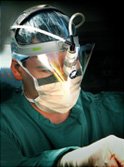Total Shoulder Replacement


Modern advancements in shoulder replacement surgery have resulted in high rates of successful outcomes for patients with osteoarthritis. It is therefore not surprising that more patients are being treated with a shoulder replacement than ever before. In fact, over the last several years, the number of shoulder replacements performed in the United States has increased at a faster rate than even hip or knee replacements.
Modern Total Shoulder Replacement surgery has shown clinical success rates of 93-95% with improvements in pain relief and restoration of shoulder function. Thus, for a patient with severe osteoarthritis of the shoulder who has failed attempts at conservative treatment, a total shoulder replacement is a remarkable surgical alternative. Following a shoulder replacement, patients are typically able to return to previous activities with improved ability. In fact, over 70% of patients treated with a shoulder replacement noted improvements in their ability to play tennis, golf, and swim. Most patients are able to return to these activities within 3-4 months. A study performed ten years ago found that it took approximately 4.5 months to be able to play a full round of golf, however, the shoulder replacement helped to improve golf scores by an average of 5 strokes.
Many patients initially fear undergoing a shoulder replacement based on anecdotal experiences of others who were treated in the past. Several recent studies have investigated the risks involved in shoulder replacement surgery. As a recent study from Johns Hopkins University illustrated, total shoulder replacement is actually safer than hip or knee replacement surgery with a 50% lower complication rate and shorter hospital stays.1 Complication rates were also 50% lower in patients treated by surgeons who perform a high volume of shoulder replacement surgeries. Patients should therefore be encouraged to seek out a shoulder specialists who routinely perform a high volume of shoulder replacement to best determine if a shoulder replacement is indicated.
Whether to proceed with a total shoulder arthroplasty should be a quality of life decision. If the patient’s quality of life is dramatically affected by shoulder pain and loss of function from arthritis, then a total shoulder arthroplasty should be strongly considered. Physicians should be encouraged to identify those surgeons who perform a high volume of shoulder arthroplasty, as these surgeons are likely best able to determine of a shoulder replacement is indicated and may perform the surgery with lower rates of complications.
References
- Farmer KW, Hammond JW, Queale WS, Keyurapan E, McFarland EG. Shoulder arthroplasty versus hip and knee arthroplasties: a comparison of outcomes.Clin Orthop Relat Res. 2007 Feb;455:183-9.
- Edwards TB, Kadakia NR, Boulahia A, Kempf JF, Boileau P, Némoz C, Walch G.A comparison of hemiarthroplasty and total shoulder arthroplasty in the treatment of primary glenohumeral osteoarthritis: results of a multicenter study.J Shoulder Elbow Surg. 2003 May-Jun;12(3):207-13.
- Norris TR, Iannotti JP.Functional outcome after shoulder arthroplasty for primary osteoarthritis: a multicenter study.J Shoulder Elbow Surg. 2002 Mar-Apr;11(2):130-5.
- Hammond JW, Queale WS, Kim TK, McFarland EG. Surgeon experience and clinical and economic outcomes for shoulder arthroplasty. J Bone Joint Surg Am. 2003 Dec;85-A(12):2318-24.
- Jain N, Pietrobon R, Hocker S, Guller U, Shankar A, Higgins LD The relationship between surgeon and hospital volume and outcomes for shoulder arthroplasty. J Bone Joint Surg Am. 2004 Mar;86-A(3):496-505.





